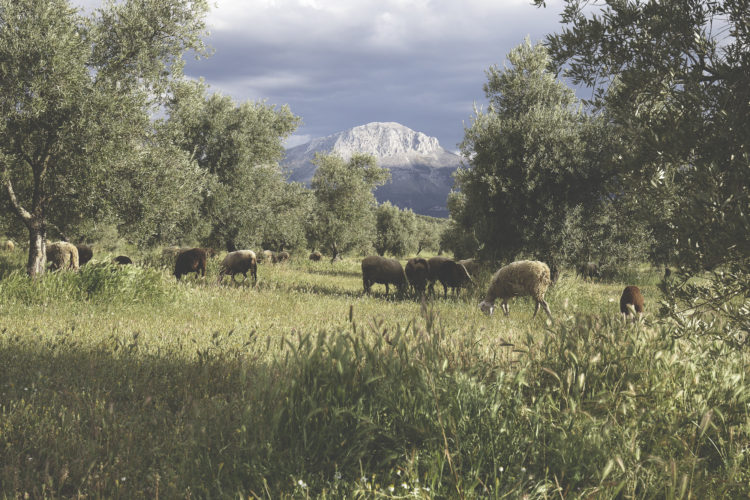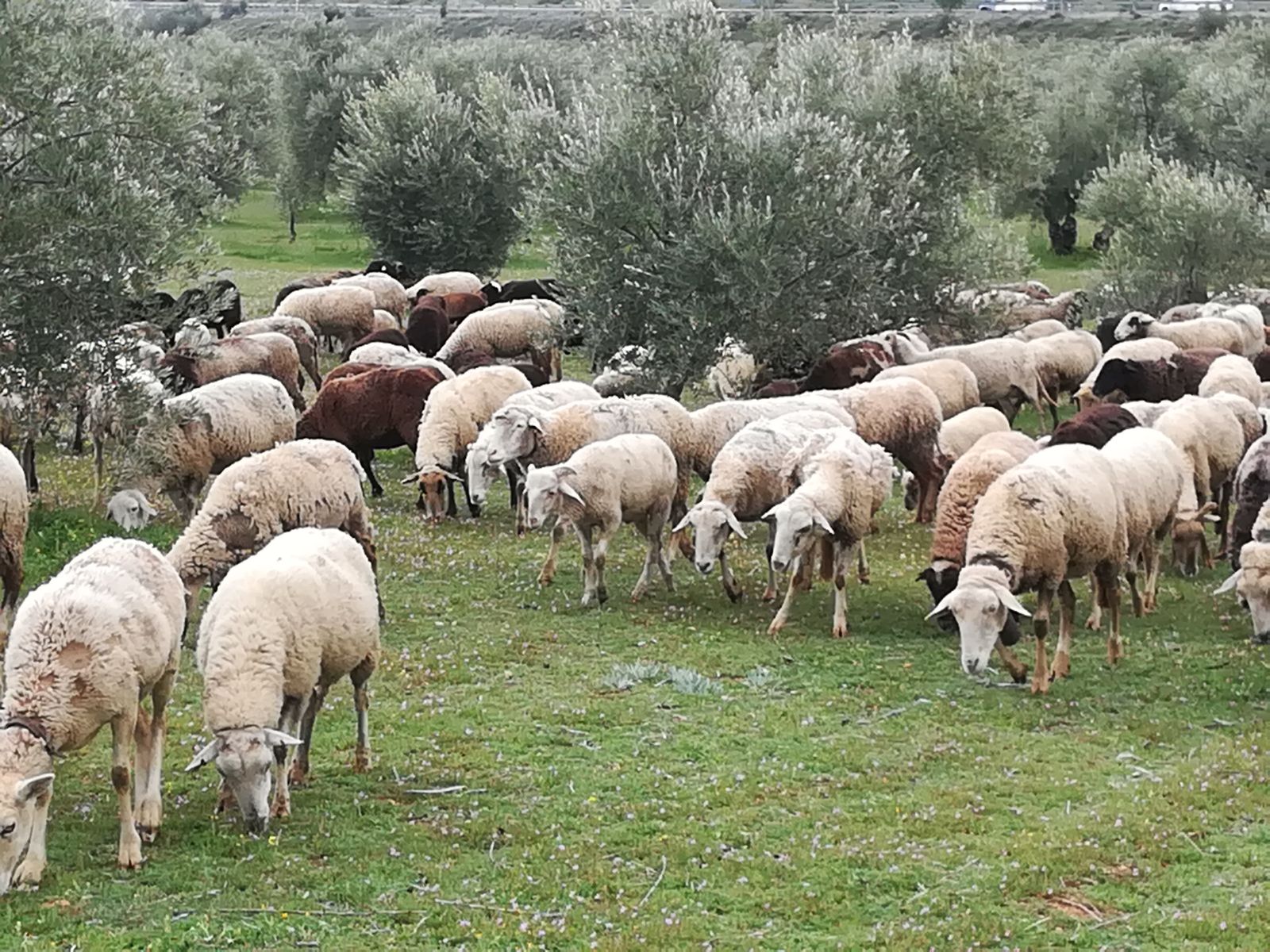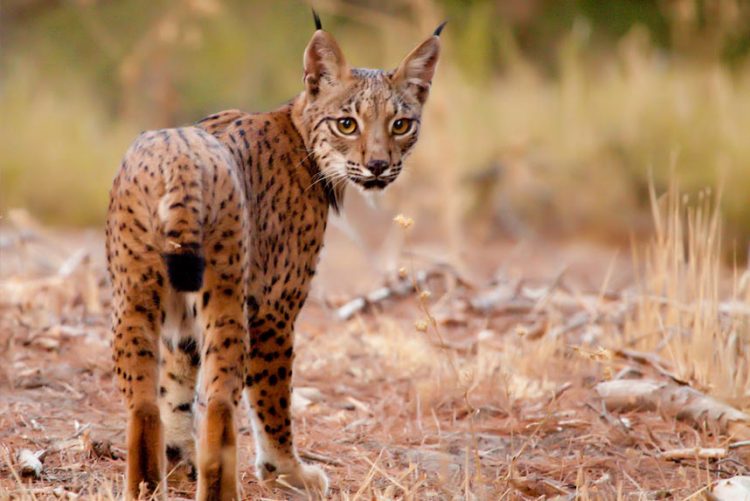Our Agroecosystem
Organic farming
The farm of Cortijo Nuevo de Búlar is managed with organic farming methods, as certified by CAAE-Ecovalia and complies with the guidelines set by the European Union standard ES-ECO-001-AN EU Agriculture.
In our agroecosystem we perform biological control of pests, fostering the natural ecological balance with various herbaceous species that enable a diversity of insect populations that self-regulate naturally, creating a complex and balanced ecological system. We obtain a premium organic extra virgin olive oil, Oilé by Dehesa de Búlar, which, in addition to having a very high organoleptic and culinary quality, has high levels of polyphenols, which are responsible for the extra virgin quality oils being the healthiest edible fat worldwide, as recognized by medical institutes around the world.
The management of the vegetation cover, which competes for water resources with the olive grove, is carried out by mechanical means with brushcutters, contributing organic matter to the soil and enriching it. In addition, during the spring, we introduce herds of up to eight hundred sheep that help us control the cover, leaving their manure while grazing, which adds nutrients and organic matter, improving the physical and chemical structure of the land´s soil.
Supplementary fertilization is done only when necessary, by adding composted sheep manure or certified natural fertilizers suitable for organic agriculture, such as alpeorujo compost – a waste product from the oil mill composed by a mixture of olive-residue oil and vegetable water. This provides a high level of nitrogen, an essential element for the proper nutrition of the olive tree. In this respect, there is a draft project to build an alpeorujo composting plant within the premises, with the purpose of integrating all the surplus of the process of obtaining the oil in the mil – leaves, pits and alpeorujo- to our soil, thus closing the cycle of nutrients in the olive grove.

It is in this environmental context we cultivate and obtain the fruits with which we elaborate our premium organic extra virgin olive oil Oilé by Dehesa de Búlar.
Vegetable Covers and Live Soils
The condition of our soils – after decades of traditional tillage that produced very pronounced erosion processes – hence the implementation, beginning in 1996, of a new system of soil management through the establishment of vegetation ground cover. The erosion reduction observed since this system was implemented has been spectacular, we have calculated that we have managed to avoid the loss of 10 metric tons / hectare / year of soil, improving the infiltration of rainwater to aquifers and minimizing surface runoff. The physical and chemical improvement of our soils, the increased percentage of organic matter and beneficial microfauna, allows us to talk about truly “living soils”, where an edaphological profile similar to that of virgin soils is recovered. Besides, our vegetation soil cover contains an important percentage of clover and other legume species, fixing nitrogen in the soil that serves as a nutrient for olive trees. In short, we manage our olive grove as if it were a pastureland: the Dehesa de Búlar, where grass is abundant for ovine livestock and management is aimed at achieving a complex and balanced olive grove ecosystem, compared to the conventional olive monoculture system with bare soils and without wildlife.

En este contexto ecológico y ambiental cultivamos y obtenemos los frutos con los que elaboramos nuestro aceite de oliva virgen extra ecológico premium Oilé by Dehesa de Búlar.
Management of forest areas, hedges and boundaries

Along with the many oaks (Quercus ilex) scattered amongst the olive grove -some more than a hundred years old- within the estate we have almost forty hectares of pasture, scrubland, hedgerows and shrubbery of holm oak, quejigo (Quercus faginea) and Mediterranean scrub, among which we find gorse (Genista spp.), thyme (Thymus spp.), rosemary (Rosmarinus officinalis) and hawthorn (Crataegus monogyna).
Our commitment to the environment and the recovery of the traditional landscape forced us to design a management and conservation strategy for autochthonous plant species, which has produced areas of agricultural-forest ecotone that serve as a refuge and source of food for the beneficial insects of the olive grove and for the macrofauna in the area, achieving very high plant biodiversity rates that are difficult to find in a standard olive grove production.
Biodiversity
On the land under our care and management an important variety of fauna can be found, here we mention just a few. The most representative carnivorous mammals are the fox (Vulpes vulpes), the genet (Genetta genetta), the badger (Meles meles) and the wild cat (Felis silvestris silvestris). We are looking forward to the arrival of the Iberian lynx (Linx pardinus) -the most threatened feline in the world-, since we are located in the natural range of expansion of the species, with the north face of Sierra Arana a perfect habitat for its reintroduction, having already registered its occasional presence in the region.
Among the herbivorous mammals, apart from the common rabbit (Oryctolagus cuniculus) -of which we have an important population- and the hare (Lepus granatensis), we can highlight the wild boar (Sus scrofa) and the wild ibex (Capra pirenaica hispanica), which approaches the olive grove especially in the summer from the nearby Sierra de Huétor Natural Park. It is common to see a dormouse (Eliomys quercinus) on the branches of our olive trees, and, below ground, the Mediterranean mole (Microtus duodecimcostatus), which would be -like the rabbit- an important pest if there weren´t abundant populations of natural predators in the farm. After all, pests are no more than nature’s response to ecological imbalances that are minimized with proper management of the agrosystem.
In our skies it is possible to see birds of prey such as the Iberian imperial eagle (Aquila adalberti), cataloged in danger of extinction and the most majestic of the Iberian raptors. It is also frequent to spot the booted eagle (Hieraaetus pennatus), which nests in the vicinity of the farm and which, due to climate change, even begins to spend winters here. The peregrine falcon (Falco peregrinus), the common kestrel (Falco tinnunculus) and the griffon vulture (Gyps fulvus) are also frequently seen. Among the nocturnal raptors is the great horned owl (Bubo bubo), which also nests in the vicinity, the barn owl (Tyto alba), the scops owl (Otus scops) and the little owl (Athene noctua). There´s also an important number of insectivorous birds present on the farm, like the commonly seen hoopoe (Upupa epops), the European bee-eater (Merops apiaster) and the royal shrike (Lanius meridionalis).

Among the reptiles we highlight the stair snake (Rhinechis scalaris), which can reach up to two meters in length, and the increasingly scarce ocellated lizard (Timon lepidus).
In the Búlar farm we not only respect all these species, but we manage the olive grove and the forest areas to improve their populations and establish a natural ecological balance. We´ve placed nest boxes in strategic points, both for insectivorous birds and for nocturnal raptors and bats, that help us in the biological control of pests.
